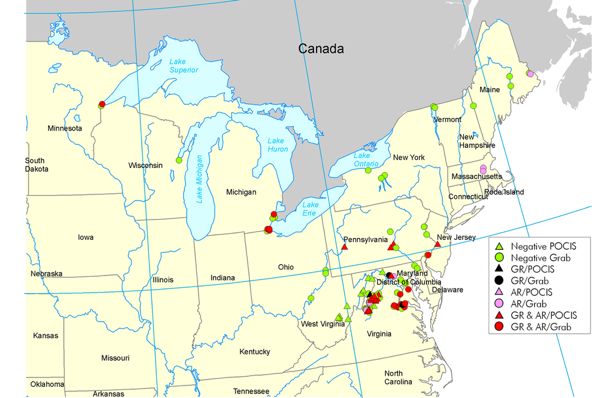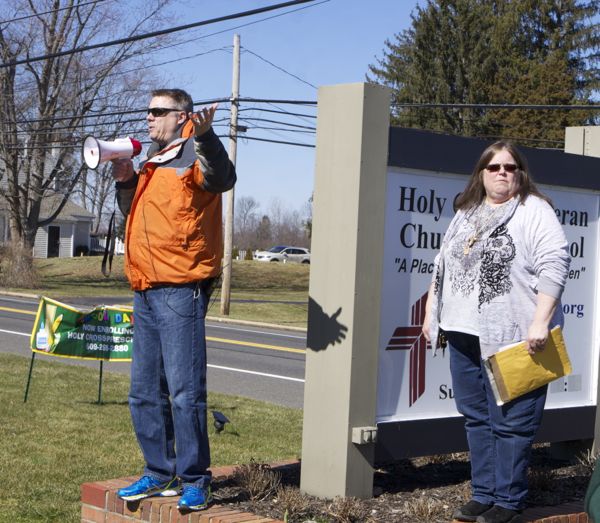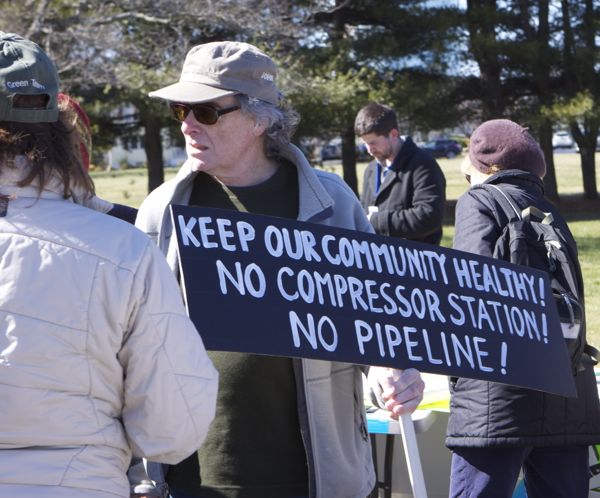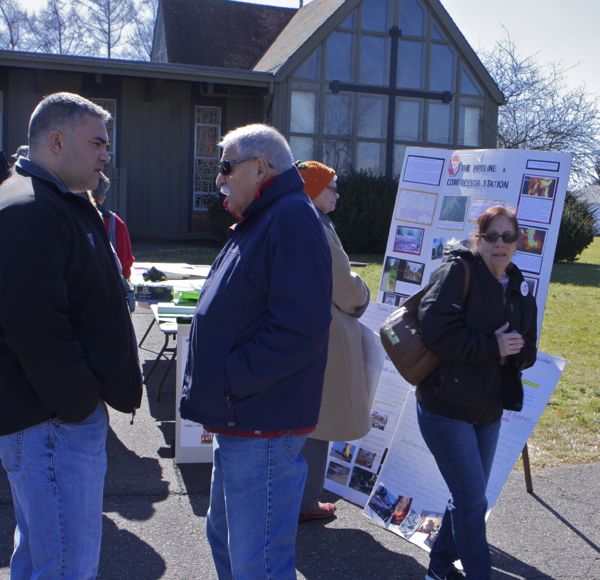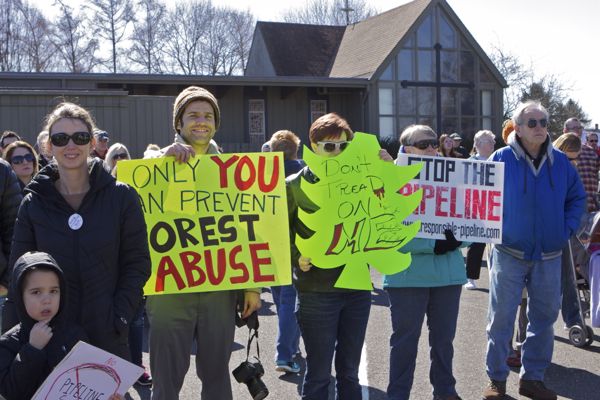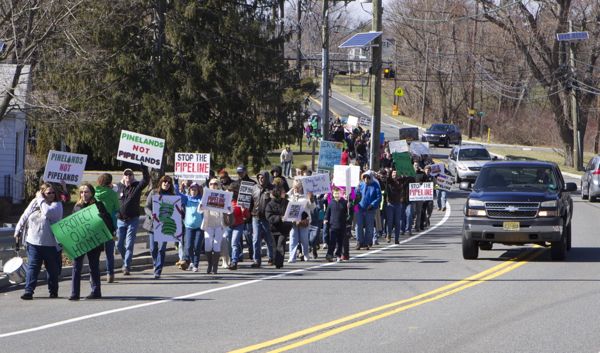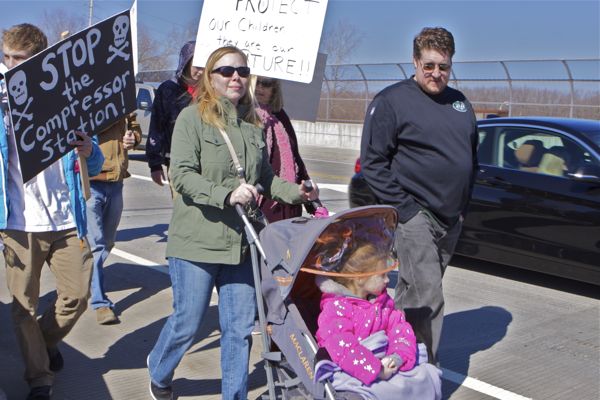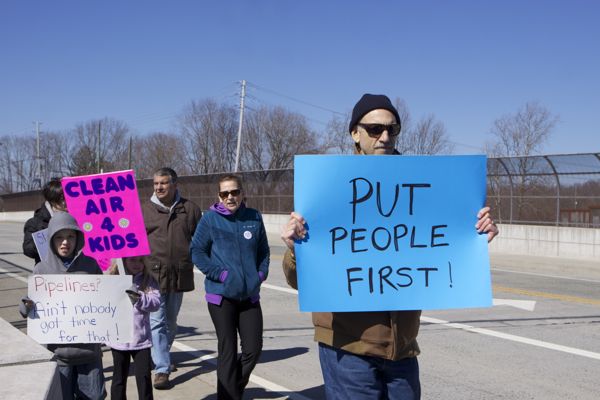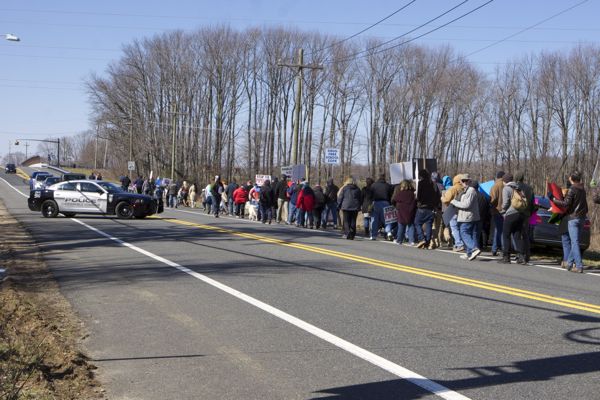USGS Study Documents High Levels of Prescription Drugs In Streams – Source is Pharmaceutical Manufacturing Plants
Perhaps you don’t know about any of this because Big Pharma is one of the most economically and politically powerful corporate interests in NJ
Facilities involved in the manufacture of pharmaceutical products are an under-investigated source of pharmaceuticals to the environment. ~~~ USGS study
Bear with me as I begin with a hypothetical to create a journalistic analogy, before I get to the USGS study.
Could you imagine sensational news coverage of a United States Geological Survey (USGS) study that found high numbers of dead canaries in Appalachian coal mines, but failed to report on or investigate the health risk to miners – other than from eating canaries – the adequacy of governmental regulatory oversight, and the compliance history of the coal mining industry??
Would that reporting pass the straight face test?
Well that’s just what the Bergen Record did in recent stories on a USGS study that documented dual sexed fish in the Wallkill River and Great Swamp.
Those “alarms” raised by the study sure were rapidly quelled.
Instead of doing followup reporting on the implications of that USGS study, the Record quickly moved on and found a shiny new and politically safe object to entertain readers: the Claude Rains act in a series of stories (3 so far) regarding EPA’s failure to disclose – for 3 months – detected concentrations of the chemical 1, 4-dioxane in groundwater at the Ringwood Ford Superfund site.
Do Record reporters really not know that government witholding of information from the public to protect corporate polluters & downplay risks is standard operating procedure? It has even been reduced to writing in official policy, see: NEW JERSEY ENVIRONMENTAL AGENCY ISSUES GAG ORDER TO STAFF
Note how even in one of the most egregious cases – where scores of young children were poisoned by the neurotoxin mercury – the DEP insisted – an even went on record and told the NY Times – that they did nothing wrong, see: Memo Shows Agency Knew of Danger in Child Care Building
The New Jersey Department of Environmental Protection knew in 1994 that a building that later housed a Gloucester County day care center was so dangerous that state inspectors were instructed to use respirators when entering the building, according to an internal memo obtained by The New York Times yesterday.
But the site remained contaminated, and as far as the department knew, unoccupied, until inspectors visited it in April and found that Kiddie Kollege, a day care center serving children as young as 8 months old, was operating in the building. Yet the center, which is in Franklin Township, was allowed to remain open for more than three months, until state environmental investigators determined in late July that the site was still contaminated. …
The [DEP] internal memo, dated Oct. 12, 1994, said “Level C at a minimum is required for entry into the building,” meaning respirators were required, said Bill Wolfe, a former department employee who is the director of New Jersey Public Employees for Environmental Responsibility, a watchdog group that provided a copy of the memo.
Mr. Wolfe said that the department should have at least notified the center’s operators about the building’s potential dangers.
“Why didn’t somebody have the common sense to pick up the phone and call the operator of the facility and say, ‘Look, we have a reasonable concern?’ ” he asked. “That’s part of the culture of the program that needs to be reformed.”
Irene Kropp, the assistant commissioner for site remediation and waste management, replied, “We did not internally know of any risks at that time, so we didn’t have any discussion about notifying the parents.”
Now DEP Asst. Commissioner Kropp was not fired for those outrageous remarks – no, she was promoted and was Christie DEP Commissioner Bob Martin’s Deputy Commissioner and enforcer of his DEP “cultural change”, “transformation” and deregulatory initiatives. Kropp retired recently amidst ethics complaints growing out of the Fenimore landfill scandal.
Witholding information is the rule, not the exception, see: DEP Protecting Polluters, Not People
This lack of skepticism and naiveté by Record reporters is extremely revealing, and it explains why they so often take EPA & DEP press releases and statements at face value, as if government did not intentionally hide and spin information to downplay risks, protect polluters, and spin to cover their own asses.
The Record denounced EPA for a 3 month delay in disclosing a chemical that no one in Ringwood is drinking or being exposed to from the groundwater, but is present in many consumer products at levels hundreds of times higher than EPA found in Ringwood groundwater, see: “How might I be exposed” according to federal ATSDR:
You can be exposed to 1,4-dioxane in tap water.
Current levels of 1,4-dioxane in water are not known. In the 1970s, the level of 1,4-dioxane in drinking water was 1 microgram per liter of water (1 µg/L).
Your skin may come into contact with 1,4-dioxane when you use cosmetics, detergents, and shampoos containing 1,4-dioxane.
During 1992-1997, the average concentration of 1,4-dioxane in some cosmetic products reportedly ranged from 14 to 79 mg/kg. In a more recent survey reported by the Campaign for Safe Cosmetics, the levels of 1,4-dioxane in cosmetic products were found to be lower (1.5-12 ppm in baby and children’s products and 2-23 ppm in adult products) than in the survey done by the FDA in the 1990s.
The Record did a followup on this non-story, giving water officials and corporate polluters a pass and opportunity to look good – meanwhile, the Wanaque reservoir they are sampling for 1,4-dioxane receives millions of gallons of polluted water pumped from the Passaic River! Why not sample for EDC’s and pharmaceuticals in Passaic & reservoir?
Meanwhile, the Record ignored the fact that Dupont, EPA and DEP withheld knowledge of direct exposure to cancer causing chemicals from vapor intrusion by 450 families in their own homes for almost 8 YEARS (see the timeline of who knew what when in: The Great Dupont Train-RCRA.
Because Pompton Lakes homeowners lacked that knowledge of their exposure, they were unable to take actions to prevent exposure and they settled a lawsuit with Dupont and waived their ability to sue Dupont for vapor intrusion harms to their health and property values (get all the disgusting details in: F is for Fraud.)
In another glaring example of government sitting on or downplaying critical data, this April 2010 DEP Research paper reports on development of regulations to require treatment of over 500 unregulated chemicals DEP found in NJ water supplies – that controversial DEP paper has NEVER been reported on (and note how the links to the citations in that DEP paper are dead).
I’ve written about this set of issues so many times in failed attempts to get Record reporters to cover the big story literally right under their noses – the Record’s office sits off Rt. 80 high on a hill right above the Passaic River – that I went searching for an example I’ve not mentioned before.
So let me briefly lay out what you should be reading in NJ newspapers in followup stories on the USGS dual sexed fish study.
1. A simple Google of prior USGS research on the chemicals they call “emergent contaminants” reveals a large body of research that documents the problem, conducted over a period of many years. That work is hidden in plain sight.
The most recent USGS Wallkill & Great Swamp findings are NOT new and the sources of the problem are known and the public health risks are of concern, particularly in rivers that receive wastewater discharge that are used for drinking water supply. Rivers like the Passaic, which receive the water from the toilets flushed at Bergen Record HQ.
2. Similarly, this US EPA website provides a perfect example of how regulators downplay the problem to protect corporate polluters. Note how EPA limits the discussion to effects on aquatic life, and says nothing about public health risk and impacts. That’s the same approach as a “study the canaries, not the coal miners and never mind regulating the mining industry” I joked about in my earlier hypothetical case.
Th EPA webpage was so evasive, it could have been written by Big Pharma.
3. A little more investigation of the issue would reveal a 20 year history of repeated EPA regulatory inaction, a capitulation to Big Pharma.
Perhaps you don’t know any of this because Big Pharma is one of the most economically and politically powerful corporate interests in NJ.
4. But let me drill a little deeper to illustrate how pervasive the government fear and protection of the Big Pharma corporate polluters really is.
One USGS study in particular caught my eye – and it was conducted by a team that included a scientists from the USGS West Trenton office:
First of all, the title leaves out a critical fact that the study focused on PHARMACEUTICAL manufacturing facilities. Was USGS afraid to say that?
But it gets much worse. The study found:
In a 2004-2009 study, U.S. Geological Survey (USGS) scientists found that pharmaceutical manufacturing facilities can be a significant source of pharmaceuticals to the environment. Effluents from two wastewater treatment plants (WWTPs) that receive discharge from pharmaceutical manufacturing facilities (PMFs) had 10 to 1000 times higher concentrations of pharmaceuticals than effluents from 24 WWTPs across the nation that do not receive PMF discharge. The effluents from these two WWTPs are discharged to streams where the measured pharmaceuticals were traced downstream, and as far as 30 kilometers from one plant’s outfall. …
… Maximum pharmaceutical concentrations in effluent samples from the 24 WWTPs that do not receive discharge from PMFs rarely (about 1 percent) exceeded one part per billion (ppb). By contrast, maximum concentrations in effluents from the two WWTPs receiving PMF discharge were as high as 3,800 ppb of metaxalone (a muscle relaxant), 1,700 ppb of oxycodone (an opioid prescribed for pain relief), greater than 400ppb of methadone (an opioid prescribed for pain relief and drug withdrawal), 160 ppb of butalbital (a barbituate), and greater than 40 ppb of both phendimetrazine (a stimulant prescribed for obesity) and carisoprodol (a muscle relaxant).
Shoot, we may soon need prescriptions to swim in the river! Jeff Tittel’s famous one liner “Viagra Falls” to describe the Passaic is no joke.
So I hit the link to read the full paper.
Because the USGS conducted a national study and because NJ is a big pharmaceutical state, I wanted to see if any NJ rivers, sewage treatment plants, and pharmaceutical manufacturing facilities were included in the study.
There were none in NJ, but there were several in New York state.
I was curious to find out exactly who these corporate polluters were and where these facilities were located and – after several links and database searches – I managed to find the supporting data.
I’ll be damned – the supporting data did not disclose the names of the pharmaceutical manufacturing plants, the sewage treatment plants, or the stream where these high levels of drugs were found.
The people who live near those streams, whose drinking water wells may draw from those streams, whose children and pets play in those streams, and those who fish in those streams have a right to know this information.
Those that work on developing legislative and regulatory reforms to reduce the risks of these chemicals deserve to know this information to hold the pharmaceutical industry and wastewater treatment plants accountable.
This information is public and should not be masked by USGS scientists. That kind of “supporting information” only protects corporate polluters.
I knew that government protected polluters in most regulatory and risk assessment work, but now they are even protecting the corporate polluters in scientific investigations.
That is just wrong.
Where are our intrepid journalists – those brave guys currently hammering EPA on Ringwood – in writing these stories?
[End Note: The Map above is from this USGS study, showing widespread impacts:
See USGS webpage:
